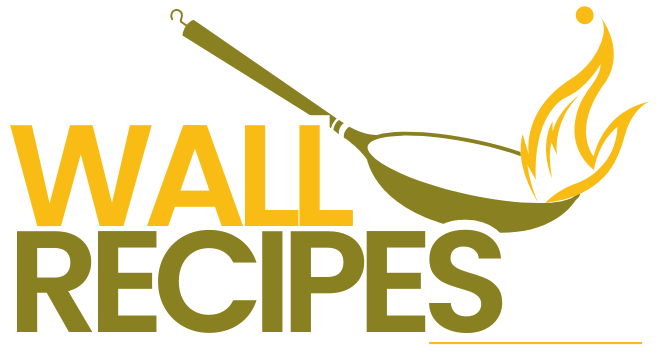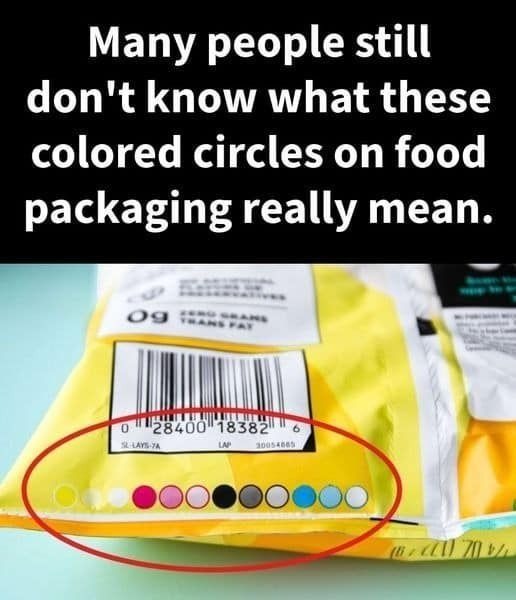- The marks allow printers to verify the consistency and accuracy of the ink application. For example:
- Are the colors too light or too dark?
- Is the ink evenly distributed?
C. Cutting and Folding Precision
- Many food packages are cut and folded after printing. The registration marks help guide machines to cut and fold the packaging accurately, ensuring everything lines up properly.
3. Why Are They Different Colors?
The colored circles or bars represent the individual ink colors used in the printing process. Each color corresponds to one of the primary ink colors (CMYK) or specialty colors (like metallic or Pantone shades). Here’s a breakdown:
- Cyan (light blue): One of the primary colors in the CMYK model.
- Magenta (pinkish-red): Another primary color in the CMYK model.
- Yellow: The third primary color in the CMYK model.
- Black: Used for text, outlines, and darker tones.
- Other Colors: Sometimes, additional colors like white, metallics, or custom Pantone shades are used for special effects.
By checking how these colors appear on the registration marks, printers can confirm that the final product will look as intended.
4. Are They Safe to Eat?
No, the registration marks themselves are not meant to come into contact with the food inside the package. They are typically printed on the outside of the packaging material and are part of the manufacturing process. In some cases, they may be located on parts of the packaging that are folded or trimmed away before the product is sealed.
Food packaging materials must comply with strict safety regulations, so any ink or dye used in the printing process is designed to be safe and non-toxic. However, the marks themselves are not edible and should not be ingested
5. Other Shapes and Symbols on Packaging
In addition to registration marks, you might notice other symbols or codes on food packaging. Here’s what they could mean:
A. Recycling Symbols
- These indicate whether the packaging is recyclable and what type of material it’s made from (e.g., plastic #1, #2, etc.).
B. Batch Codes and Expiry Dates
- Numbers or letters printed on the packaging often indicate the production batch, expiration date, or location of manufacture. This helps with quality control and tracking.
C. QR Codes or Barcodes
- These are used for scanning at checkout or providing additional information about the product.
D. Manufacturer Logos
- Some brands include small logos or icons to indicate partnerships, certifications (e.g., organic, gluten-free), or manufacturing details.
6. Fun Fact: Why Are They Circles or Bars?
The shapes of registration marks vary depending on the printer and design requirements. Circles, squares, or bars are common because they are simple geometric shapes that are easy to measure and align. The key is that they provide clear visual indicators for the printing process.
Final Thoughts
Those colored circles or bars on food packaging aren’t random—they play a crucial role in ensuring that the packaging is printed accurately and looks great on store shelves. While they may seem like minor details, they highlight the precision and care that goes into creating the products we use every day.
Next time you spot these marks, you’ll know they’re a behind-the-scenes peek into the fascinating world of printing and packaging! 🎨📦
- The marks allow printers to verify the consistency and accuracy of the ink application. For example:
- Are the colors too light or too dark?
- Is the ink evenly distributed?
C. Cutting and Folding Precision
- Many food packages are cut and folded after printing. The registration marks help guide machines to cut and fold the packaging accurately, ensuring everything lines up properly.
3. Why Are They Different Colors?
The colored circles or bars represent the individual ink colors used in the printing process. Each color corresponds to one of the primary ink colors (CMYK) or specialty colors (like metallic or Pantone shades). Here’s a breakdown:
- Cyan (light blue): One of the primary colors in the CMYK model.
- Magenta (pinkish-red): Another primary color in the CMYK model.
- Yellow: The third primary color in the CMYK model.
- Black: Used for text, outlines, and darker tones.
- Other Colors: Sometimes, additional colors like white, metallics, or custom Pantone shades are used for special effects.
By checking how these colors appear on the registration marks, printers can confirm that the final product will look as intended.
4. Are They Safe to Eat?
No, the registration marks themselves are not meant to come into contact with the food inside the package. They are typically printed on the outside of the packaging material and are part of the manufacturing process. In some cases, they may be located on parts of the packaging that are folded or trimmed away before the product is sealed.
Food packaging materials must comply with strict safety regulations, so any ink or dye used in the printing process is designed to be safe and non-toxic. However, the marks themselves are not edible and should not be ingested
5. Other Shapes and Symbols on Packaging
In addition to registration marks, you might notice other symbols or codes on food packaging. Here’s what they could mean:
A. Recycling Symbols
- These indicate whether the packaging is recyclable and what type of material it’s made from (e.g., plastic #1, #2, etc.).
B. Batch Codes and Expiry Dates
- Numbers or letters printed on the packaging often indicate the production batch, expiration date, or location of manufacture. This helps with quality control and tracking.
C. QR Codes or Barcodes
- These are used for scanning at checkout or providing additional information about the product.
D. Manufacturer Logos
- Some brands include small logos or icons to indicate partnerships, certifications (e.g., organic, gluten-free), or manufacturing details.
6. Fun Fact: Why Are They Circles or Bars?
The shapes of registration marks vary depending on the printer and design requirements. Circles, squares, or bars are common because they are simple geometric shapes that are easy to measure and align. The key is that they provide clear visual indicators for the printing process.
Final Thoughts
Those colored circles or bars on food packaging aren’t random—they play a crucial role in ensuring that the packaging is printed accurately and looks great on store shelves. While they may seem like minor details, they highlight the precision and care that goes into creating the products we use every day.
Next time you spot these marks, you’ll know they’re a behind-the-scenes peek into the fascinating world of printing and packaging! 🎨📦

